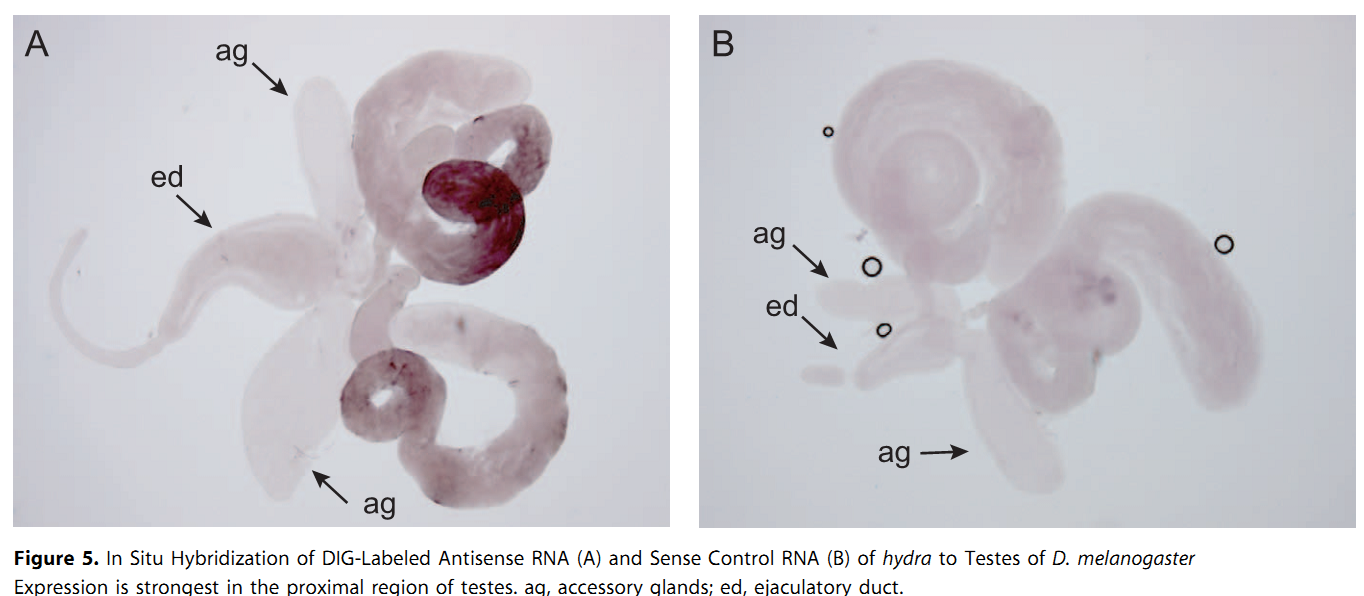| Tag | Content | |||
|---|---|---|---|---|
SG ID |
SG00000266 |
|||
UniProt Accession |
||||
Theoretical PI |
10.04
|
|||
Molecular Weight |
34993 Da
|
|||
Genbank Nucleotide ID |
||||
Genbank Protein ID |
||||
Gene Name |
hydra |
|||
Gene Synonyms/Alias |
ORFNames=Dmel_CG1338 |
|||
Protein Name |
||||
Protein Synonyms/Alias |
SubName: Hydra, isoform A |
|||
Organism |
Drosophila melanogaster (Fruit fly) |
|||
NCBI Taxonomy ID |
7227 |
|||
Chromosome Location |
|
|||
Function in Stage |
||||
Function in Cell Type |
||||
Description |
Temporarily unavailable |
|||
The information of related literatures |
1. S. T. Chen, H. C. Cheng, D. A. Barbash and H. P. Yang (2007) Evolution of hydra, a recently evolved testis-expressed gene with nine alternative first exons in Drosophila melanogaster. PLoS Genet 3(7): e107. Abstract We describe here the Drosophila gene hydra that appears to have originated de novo in the melanogaster subgroup and subsequently evolved in both structure and expression level in Drosophila melanogaster and its sibling species. D. melanogaster hydra encodes a predicted protein of approximately 300 amino acids with no apparent similarity to any previously known proteins. The syntenic region flanking hydra on both sides is found in both D. ananassae and D. pseudoobscura, but hydra is found only in melanogaster subgroup species, suggesting that it originated less than approximately 13 million y ago. Exon 1 of hydra has undergone recurrent duplications, leading to the formation of nine tandem alternative exon 1s in D. melanogaster. Seven of these alternative exons are flanked on their 3' side by the transposon DINE-1 (Drosophila interspersed element-1). We demonstrate that at least four of the nine duplicated exon 1s can function as alternative transcription start sites. The entire hydra locus has also duplicated in D. simulans and D. sechellia. D. melanogaster hydra is expressed most intensely in the proximal testis, suggesting a role in late-stage spermatogenesis. The coding region of hydra has a relatively high Ka/Ks ratio between species, but the ratio is less than 1 in all comparisons, suggesting that hydra is subject to functional constraint. Analysis of sequence polymorphism and divergence of hydra shows that it has evolved under positive selection in the lineage leading to D. melanogaster. The dramatic structural changes surrounding the first exons do not affect the tissue specificity of gene expression PMID: [17616977] Back to Top |
|||
Figures for illustrating the function of this protein/gene |
|
|||
Function |
||||
Subcellular Location |
||||
Tissue Specificity |
||||
Gene Ontology |
|
|||
Interpro |
||||
Pfam |
||||
SMART |
||||
PROSITE |
||||
PRINTS |
||||
Created Date |
18-Oct-2012 |
|||
Record Type |
Experiment identified |
|||
Protein sequence Annotation |
||||
Nucleotide Sequence |
Length: bp Go to nucleotide: FASTA |
|||
Protein Sequence |
Length: 302 bp Go to amino acid: FASTA |
|||
The verified Protein-Protein interaction information |
| |||
Other Protein-Protein interaction resources |
String database |
|||
View Microarray data |
Temporarily unavailable |
|||
Comments |
||||
